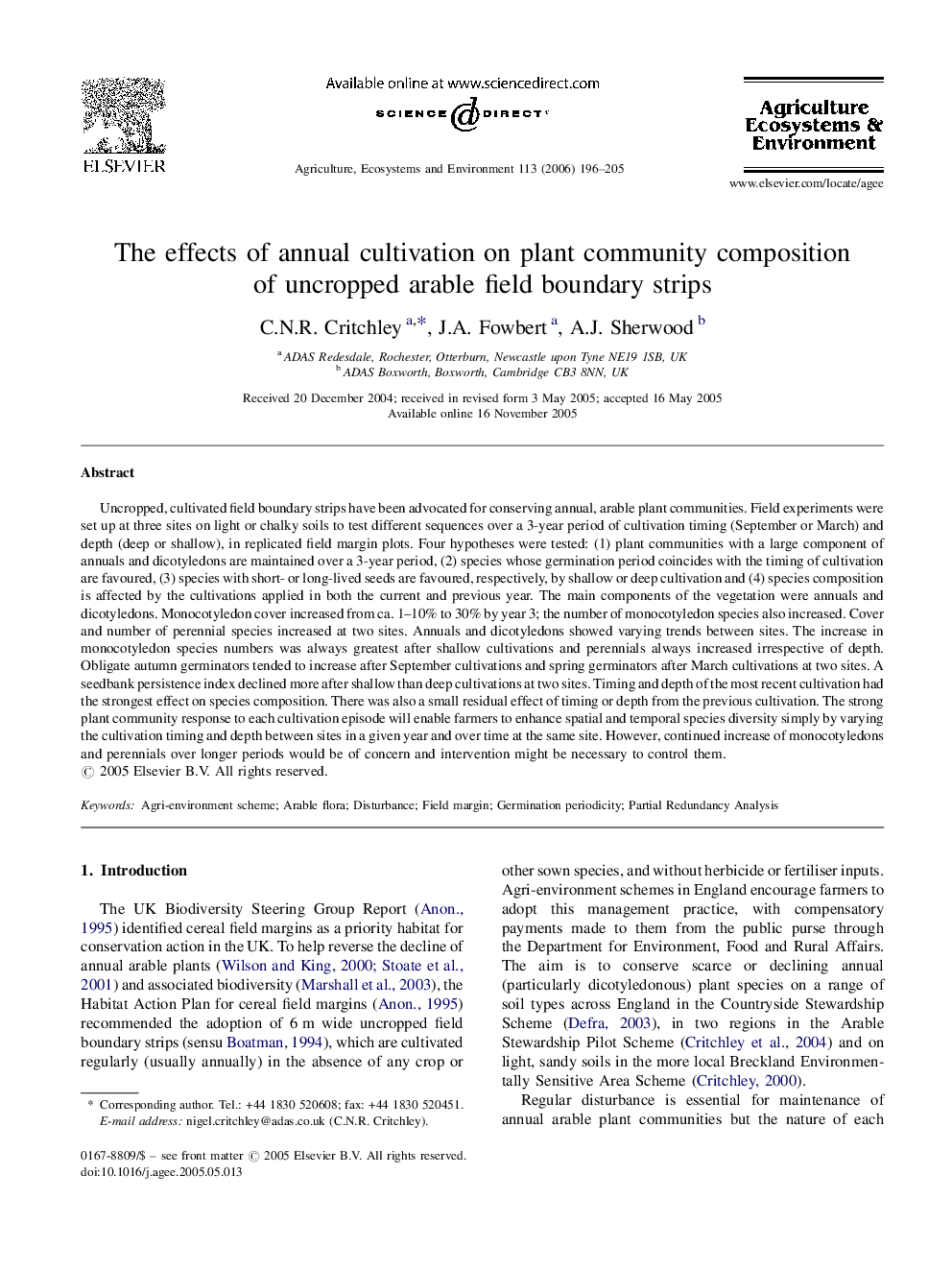| کد مقاله | کد نشریه | سال انتشار | مقاله انگلیسی | نسخه تمام متن |
|---|---|---|---|---|
| 2415969 | 1552150 | 2006 | 10 صفحه PDF | دانلود رایگان |

Uncropped, cultivated field boundary strips have been advocated for conserving annual, arable plant communities. Field experiments were set up at three sites on light or chalky soils to test different sequences over a 3-year period of cultivation timing (September or March) and depth (deep or shallow), in replicated field margin plots. Four hypotheses were tested: (1) plant communities with a large component of annuals and dicotyledons are maintained over a 3-year period, (2) species whose germination period coincides with the timing of cultivation are favoured, (3) species with short- or long-lived seeds are favoured, respectively, by shallow or deep cultivation and (4) species composition is affected by the cultivations applied in both the current and previous year. The main components of the vegetation were annuals and dicotyledons. Monocotyledon cover increased from ca. 1–10% to 30% by year 3; the number of monocotyledon species also increased. Cover and number of perennial species increased at two sites. Annuals and dicotyledons showed varying trends between sites. The increase in monocotyledon species numbers was always greatest after shallow cultivations and perennials always increased irrespective of depth. Obligate autumn germinators tended to increase after September cultivations and spring germinators after March cultivations at two sites. A seedbank persistence index declined more after shallow than deep cultivations at two sites. Timing and depth of the most recent cultivation had the strongest effect on species composition. There was also a small residual effect of timing or depth from the previous cultivation. The strong plant community response to each cultivation episode will enable farmers to enhance spatial and temporal species diversity simply by varying the cultivation timing and depth between sites in a given year and over time at the same site. However, continued increase of monocotyledons and perennials over longer periods would be of concern and intervention might be necessary to control them.
Journal: Agriculture, Ecosystems & Environment - Volume 113, Issues 1–4, April 2006, Pages 196–205